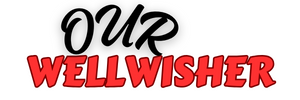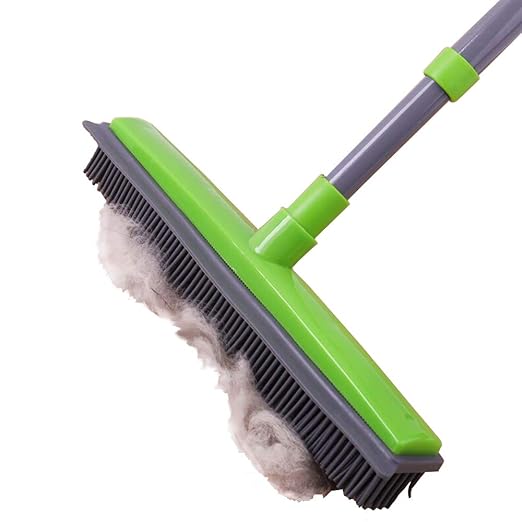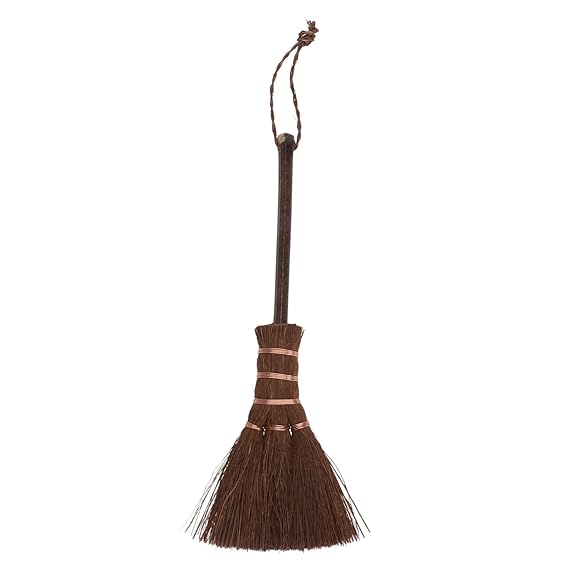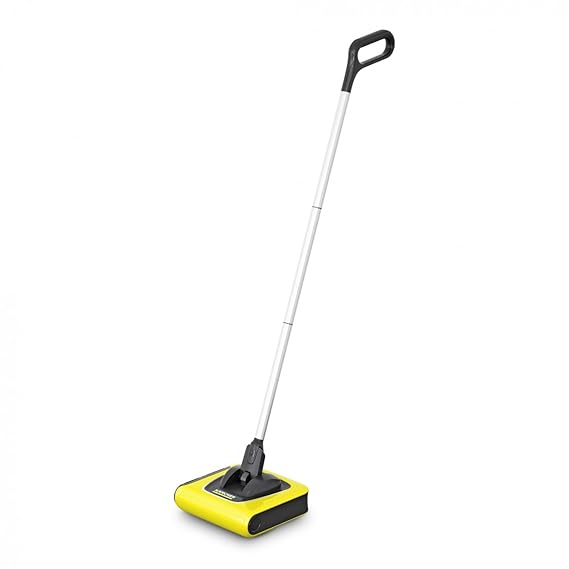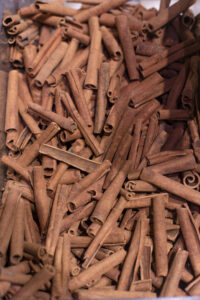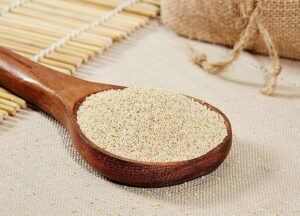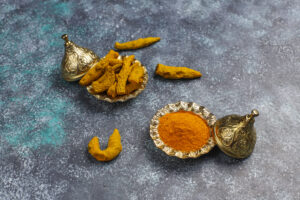The basic broom continues to be one of the most important cleaning supplies for any home. Notwithstanding its seeming simplicity, it is an adaptable instrument with multiple varieties, each intended to meet distinct cleaning requirements. This thorough guide is for you if you’ve ever wondered which one is best for you or if you just want to learn more about the different types of brooms that are out there. Here, we’ll look at the various kinds of them, their applications, and why picking the correct one may really make a big impact.
Table of Contents
The Fundamentals of a Broom:
Understanding the fundamental parts of a broomstick is essential before delving into the many kinds of brooms. Typically, it is made out of a brush head or bristles and an extended handle. While the brush head can have a wide range of materials and designs, the handle is often composed of metal, plastic, or wood.
1. Conventional Corn Broom:
The conventional corn one, sometimes referred to as a “corn broom,” is among the most identifiable broom kinds. It has a brush head composed of real corn husks that are secured to a wooden or metal pole at the end. They are renowned for being long-lasting and efficient at covering wide areas. They are very helpful for outdoor.
Important attributes:
Material: Synthetic fibers or corn husks
Handle: Metal or wood
Ideal for: wide spaces and outdoor use
Just Why Select a Corn Broom?
They are useful for collecting debris from uneven surfaces because they are made for heavy-duty sweeping. They are an excellent option for outdoor or high-traffic areas because they are very sturdy.
2. Push Broom:
It is also called the push broomstick, is a bigger one that can be used swiftly and effectively to sweep wide areas. It has a broad brush head with strong bristles that are capable of clearing large volumes of debris. They are frequently used for heavy cleaning duties around the house or in industrial settings.
Important attributes:
Material: Natural fibers or synthetic bristles
Handle: Long, usually composed of plastic or metal
3. Rectangular Broom
The bristles on it, also called the “angle broomstick,” are set at an inclined angle. It’s a fantastic tool for cleaning indoor places because of its unusual form, which makes it easier to reach corners and confined areas. Traditional brooms may find it difficult to remove debris from corners and edges due to the angled bristles.
Important attributes:
Material: Natural or synthetic bristles
Handle: Typically composed of metal or plastic
Ideal for: Closet areas, corners, and indoor use
Why Choose One?
They work great for detailed cleaning. The angled bristles ensure a thorough clean in difficult-to-reach places by making it simpler to reach into corners and along baseboards.
4. Broom with rubber
They are a relatively recent invention meant to address particular cleaning needs. They have a rubber-bristled brush head that works well in collecting pet hair and other tiny particles. The rubber bristles on these are very effective at loosening hair and grime that may be stuck in the fibers of carpets and rugs.
Important attributes:
Composition: Rubber bristles
Handle: Usually composed of metal or plastic
Ideal For: Pet hair, tiny debris, and carpets
What Makes them Better?
They work incredibly well in gathering fine dust and hair from pets. They are adaptable for a range of cleaning jobs because they may be used either wet or dry.
5. Using a whisk
A little broom that is meant to be held in the hand is called a whisk broom or hand broom. With its short handle and small brush head, it’s perfect for doing rapid clean-ups and getting into tight spaces. Whisk ones are frequently used to remove small trash piles and wipe crumbs off of worktops.
Important attributes:
Material: Natural or synthetic bristles
Short handle, frequently composed of plastic or wood
Ideal For: Tight places and small clean-ups
Why Pick a Whisk one?
They work well for short, easy cleaning jobs. They are convenient for spot cleaning and easy to store due to their small size.
6. Broom for the Street
Heavy-duty ones made especially for outdoor use on pavements and streets are known as street brooms. They have a broad brush head with coarse bristles that can effectively remove a lot of trash and difficult surfaces. To keep sidewalks and streets tidy, companies and municipalities frequently utilize street ones.
Important attributes:
Material: Often synthetic, coarse bristles
Handle: Usually made of metal, long and robust
Ideal for: Streets, pavements, and outdoor cleaning
Why Pick a one for the Street?
Street ones are designed to survive rough outdoor environments. Their wide design and sturdy bristles make them perfect for heavy-duty cleaning jobs.
7. Electric Broom
The conventional broomstick has been updated with electric ones. A motorized brush head on these brooms helps with simultaneous sweeping and vacuuming. Electric ones are made with efficiency and ease in mind; they frequently have lightweight designs and batteries that can be recharged.
Important attributes:
Composition: Brush head with motorized action
Handle: Ergonomic and lightweight
Ideal for: Convenience and indoor use
Electric ones are preferred. Why?
Electric ones are perfect for rapid and effective cleaning because they combine the features of a vacuum cleaner and a broom. They are especially helpful for people who would like sweep in a more automatic manner.
Selecting the Proper Broom:
Take into account the following elements while choosing the ideal broomstick for your needs:
Sort of Debris: Your decision may be influenced by the kind of debris you must remove. A rubber one could be your best bet if you have to deal with a lot of pet hair. Perhaps a push one would be better appropriate for heavy-duty jobs.
Length of Handle: The handle’s length may have an impact on how comfortable you are sweeping. While shorter handles are more nimble for finer tasks, longer handles are preferable for sweeping wider areas.
Bristle Type: Its efficiency can be affected by the type of bristles and how they are arranged. Finer bristles can pick up dust and other little debris, but coarser bristles work better on uneven surfaces.

In summary
Making an informed choice regarding the best one and broomstick for your cleaning requirements can be aided by being aware of the various varieties that are available. Every style of it, from the conventional corn one to the contemporary electric one, has its own advantages and is best suited for particular jobs. You may choose the ideal broomstick to maintain a clean and organized house or workspace by taking into account elements like surface type, debris kind, handle length, and bristle material.
A good one may make all the difference either sweeping a big outside space or doing a quick clean-up indoors. You’ll be well-prepared to select the best broomstick for your requirements and guarantee that your cleaning jobs are carried out quickly and successfully with the help of this advice.
FAQs:
1. What kinds of brooms are the most common?
Corn : These classic ones, made from real corn husks, are perfect for sweeping uneven surfaces and outdoor places.
Push : Great for cleaning large, flat surfaces like garages or warehouses, this tool has a wide, flat tip.
slanted : This type of brush has slanted bristles, which facilitate easier access to corners and edges.
Whisk : Small and portable, ideal for confined areas and fast clean-ups.
Home Broom: Typically composed of synthetic bristles, this flexible tool can be used on a range of indoor surfaces.
2. What is the purpose of a corn broom?
For cleaning outside surfaces like patios, driveways, and garages, corn ones work well. Their resilient bristles are able to gather trash and withstand rough surfaces.
3. What distinguishes a push one from the others?
A push one is equipped with a long handle and a large, flat head. It is perfect for warehouses, commercial locations, and large driveways because of its massive sweeper design.
4. Why should I pick a broom with an angle?
Compared to straight ones, angle ones’ bristles are arranged at an angle, making it easier to sweep around edges and into corners. They are therefore perfect for cleaning in confined areas and around baseboards.
Some More FAQs:
5. What kind of broom is ideal for usage indoors?
A home broom with synthetic bristles is typically the best option for indoor use. These are made to collect dust and debris from a variety of interior surfaces, including carpet, tile, and wood.
6. When ought a whisk broom to be used?
For short, rapid clean-ups, especially in tiny spaces, a whisk one works best. It comes in useful for cleaning up tight spaces or brushing crumbs off a table.
7. Is it okay to push a broom outside?
They are indeed suitable for outside use, particularly on level surfaces like sidewalks and driveways. They are adaptable and capable of dealing with various kinds of trash.
8. How should my broom be maintained and cleaned?
Shake off junk from it on a regular basis and, if needed, wash the bristles with water and mild soap to preserve it. To avoid mold and smells, ensure sure these with natural bristles are thoroughly dry.
9. Are there any unique factors to take into account when selecting a broom?
Think on the kind of debris you’ll be dealing, the surface you’ll be cleaning (rough vs. smooth, indoor vs. outdoor), and your physical comfort (grip and handle length). Cleaning will be more productive and efficient if you select the proper broom one your requirements.
10. Can I sweep carpet with a broom?
Although they can be used to remove surface material from carpets, they are usually less efficient than vacuums for thorough cleaning. On carpet, however, a stiff-bristled one can help remove debris and pet hair.

